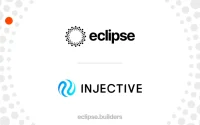Binance And Coinbase Experience Large Outflows Of Staked ETH
Binance and Coinbase have experienced significant outflows of staked ether (ETH) since Ethereum’s Shanghai upgrade as investors move towards decentralized competitors, according to blockchain data. Coinbase’s staking platform has suffered a $367 million net outflow of staked ETH since April 12, as withdrawal requests have exceeded new deposits. Meanwhile, Binance’s staking service has seen a net outflow of $340 million. On the other hand, decentralized liquid staking protocols like Frax Finance and Rocket Pool have seen sharp rises in deposits, with the two largest gainers recording net inflows of $56 million and $68 million, respectively.
Coinbase had a net outflow of $367 million in staked ETH and Binance has seen a net outflow of $340 million. Deposits to decentralized liquidity staking protocols increased, with Frax Finance and Rocket Pool recording net inflows of $56 million and $68 million.…
— Wu Blockchain (@WuBlockchain) May 3, 2023
New Deposits in DeFi Staking Protocols
The Ethereum Shanghai upgrade, which allowed investors to withdraw approximately $35 billion of tokens previously locked up in staking contracts, was predicted to be a major milestone for the $225 billion network, likely boosting staking participation, attracting institutional investors, and reshuffling the competition between staking services. The upgrade has been “a major catalyst” for decentralized liquid staking solutions, according to Ahmed Ismail, founder and CEO of liquidity aggregator platform FLUID Finance.
Liquid staking protocols issue a derivative token that represents the amount of locked tokens, allowing investors to access decentralized finance (DeFi) services such as lending and borrowing. Boosted by new deposits, the amount of ETH staked on Frax and Rocket Pool has grown 32.5% and 31% in the past 30 days, respectively, according to DefiLlama data. Lido Finance, the largest decentralized liquid staking protocol with some $11 billion of deposits, has also seen $28 million (15,208 ETH) more deposits than withdrawals since April 12.
Regulatory Pressure on Centralized Entities
Regulatory risks and aversion to centralized crypto platforms after last year’s bankruptcies are among the reasons that drive investors to decentralized staking protocols, according to Tom Wan, an analyst at digital asset investment firm 21Shares. This February, crypto exchange Kraken agreed to shut down its staking service after the US Securities and Exchange Commission (SEC) charged the exchange for offering unregistered securities. Liquid staking tokens surged following the settlement as the SEC appeared to come after staking service providers, benefitting decentralized liquid staking.
However, regulatory pressure on centralized entities may continue, warned John “Omakase” Lo, head of digital assets at investment firm Recharge Capital. “The uncertainty isn’t good for retaining deposits,” he added. Investors could also be swayed by higher staking rewards that decentralized protocols can provide, with Coinbase and Binance currently offering around 4% annualized reward for staking ETH, while decentralized protocols Lido Finance and Frax Finance provide 5-7% rates.
Despite recent outflows, Binance and Coinbase remain among the largest ETH staking providers. However, Binance’s market share fell to 4.5% from 5.7% a month ago, while Coinbase’s share dropped to 12.3% from 13%. The two exchanges face further outflows, according to data by blockchain intelligence firm Nansen, with Coinbase having some $191 million of staked ETH waiting to be withdrawn, while Binance has $41 million in withdrawal requests in its queue.



